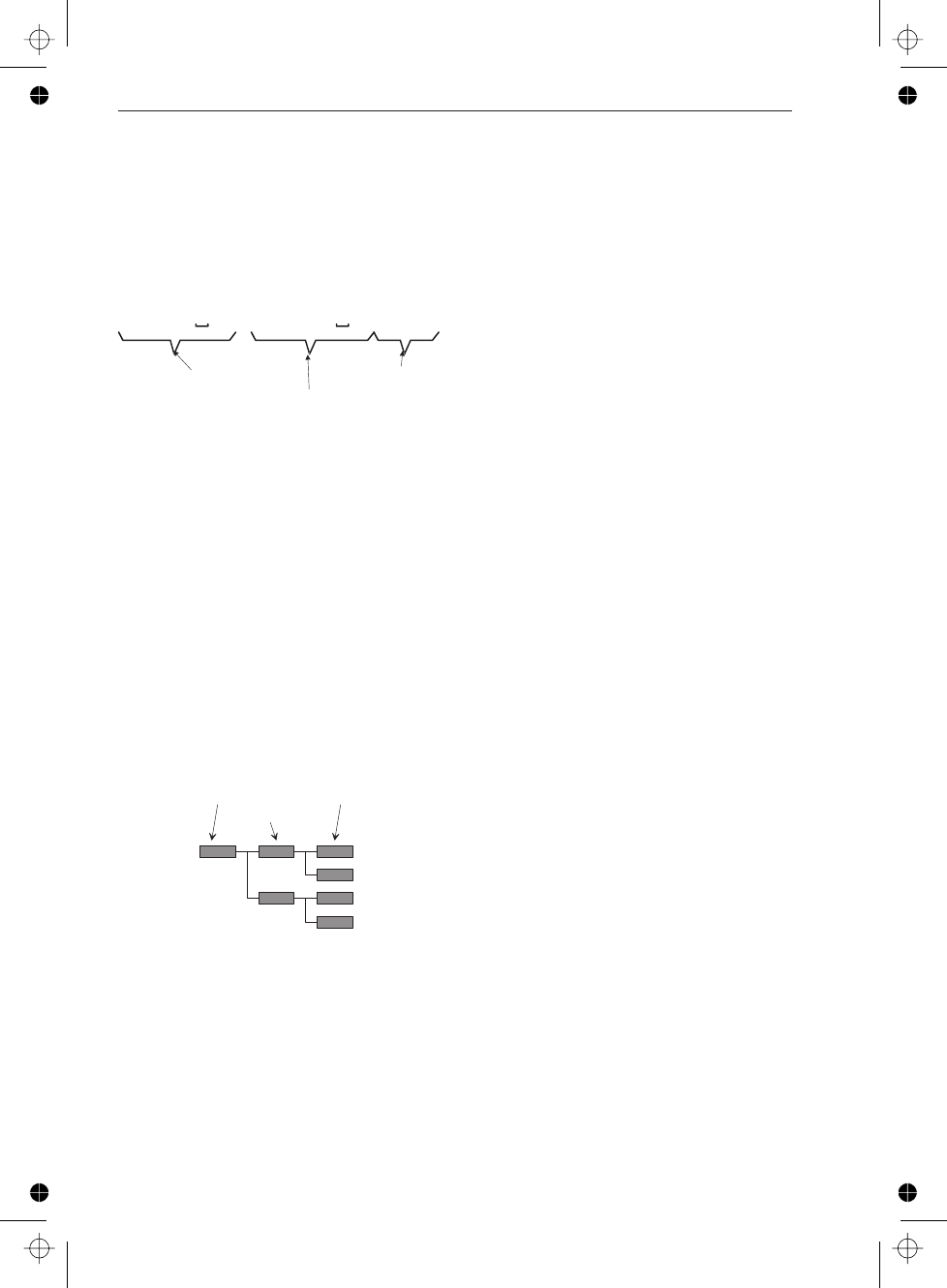
Most controller programming languages
send these terminators automatically, but
allow changing it. So make sure that the
terminator is as above.
Example of a terminated program mes
-
sage:
program message unit terminator
program message unit
This program message consists of two
message units. The unit separator (semi
-
colon) separates message units.
Basically there are two types of com
-
mands:
Common Commands
The common command header starts with
the asterisk character (*), for example
*RST.
SCPI Commands
SCPI command headers may consist of
several keywords (mnemonics), separated
by the colon character (:).
Each keyword in a SCPI command
header represents a node in the SCPI
command tree. The leftmost keyword
(INPut in the previous example) is the
root level keyword, representing the high
-
est hierarchical level in the command
tree.
The keywords following represent
subnodes under the root node. See
‘COMMAND TREE’ on page 3-10 for
more details of this subject.
Forgiving Listening
The syntax specification of a command is
as follows:
ACQuisition:APERture8<numeric value>
Where: ACQ and APER specify the
shortform, and ACQuisition and APER
-
ture specify the longform. However,
ACQU or APERT are not allowed and
cause a command error.
In program messages either the long or
the shortform may be used in upper or
lower case letters. You may even mix up-
per and lower case. There is no semantic
difference between upper and lower case
in program messages. This instrument be-
havior is called forgiving listening.
For example, an application program may
send the following characters over the
bus:
SEND→
iNp:ImP81E6
The example shows the shortform used in
a mix of upper and lower case
SEND→
Input:Imp81E6
The example shows the a mix of long and
shortform anda mixe of upper and lower
case.
3-8 Program and Response Messages
Introduction to SCPI
:INP:IMP 1E6;:ACQ:APER 0.1NL^END
Root
Subnodes
Endnode
Figure 3-7 The SCPI command tree.


















